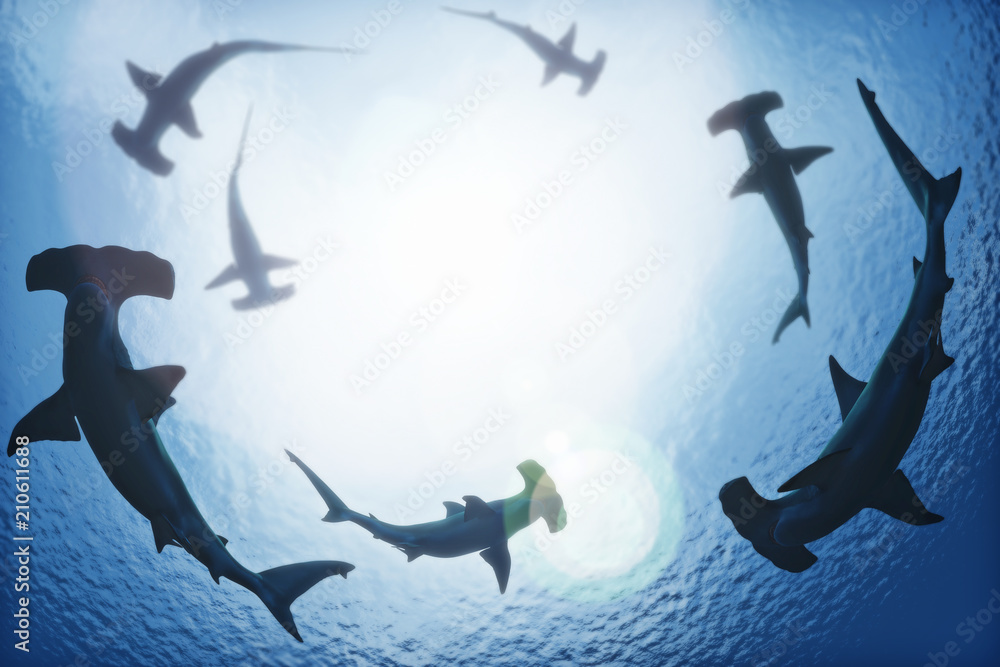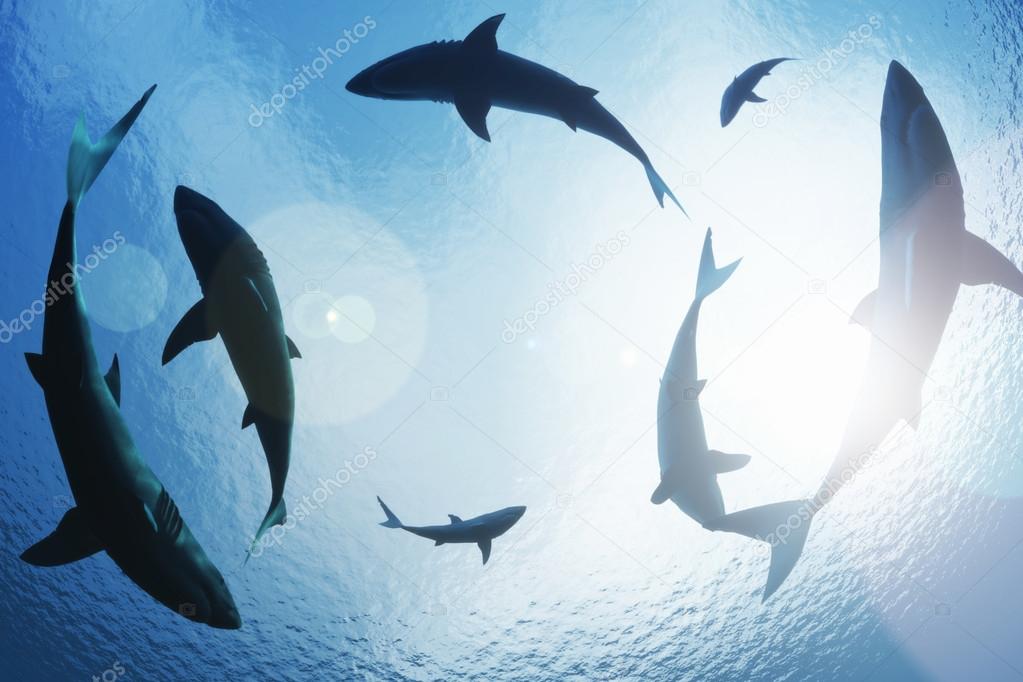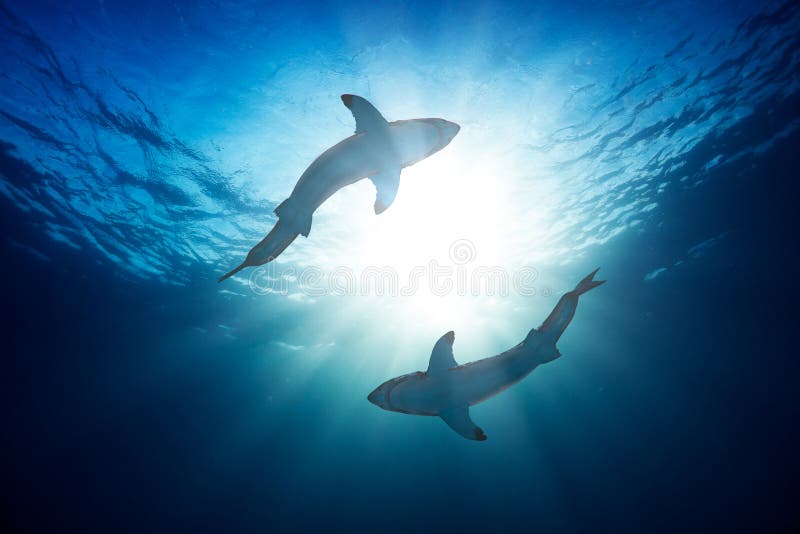Ever wondered what goes through a shark's mind as it swims around you? The circling behavior exhibited by sharks, often perceived as a prelude to attack, is in reality a complex form of investigation and navigation, driven by curiosity and the need to understand their environment.
A recent study has shed light on the fascinating reasons behind the circling movements of marine animals, including the much-maligned shark. The research reveals that some marine species utilize these circular patterns to detect geomagnetic fields, a kind of internal compass, helping them navigate the vast and often featureless ocean. This ability extends beyond sharks, with the study incorporating 3D technology to analyze the circling behavior of other marine creatures such as turtles, penguins, seals, and whales, showcasing a shared adaptation for spatial awareness.
| Field | Information |
|---|---|
| Species | Various shark species (Great White, Reef, Lemon, Tiger, Bull Sharks) |
| Observed Behavior | Circling, investigation, navigation |
| Purpose of Circling | Geomagnetic field detection, environmental assessment, prey identification, territorial awareness |
| Study Locations | County Clare, Ireland; Tampa Bay; Hawaii |
| Research Methods | 3D Technology, underwater cameras, aerial drones, tagging |
| Study Period | 2016-2021 (Ireland observations) |
| Key Finding | Circling is primarily for investigation and navigation, not necessarily predatory behavior. |
| Reference | Discovery Channel Sharkopedia |
The context in which a shark circles is paramount to understanding its intentions. For instance, a shark within its natural hunting grounds might display a heightened interest in potential prey, circling to assess its suitability as a meal. Conversely, a shark in a more open area, lacking familiar landmarks, could be circling to gather information about its surroundings and orient itself using the Earth's magnetic field.
- Charlotte Flair Espn Body Issue Leaked Photo Controversy
- Edith Mack Hirsch The Life Death Of Desi Arnazs Wife
Adding another layer of complexity, the species of shark plays a significant role in determining its circling behavior. Different species possess distinct temperaments and hunting styles. A great white shark, known for its ambush tactics, may exhibit circling patterns that differ markedly from those of a reef shark, which actively hunts within the confines of coral reefs. The former might circle to gain a broader perspective of its surroundings before launching an attack, while the latter might circle to corner prey within the reef's intricate structure.
Sharks are also known to circle new structures, topographical features, or potential hazards encountered in their environment. This investigative behavior allows them to gather crucial information about their surroundings. Lemon sharks, for example, circling a shipwreck may be scrutinizing the structure to determine if it offers shelter or serves as a habitat for potential prey. The shipwreck presents a novel environment, and the circling allows the shark to build a mental map of the area.
Furthermore, circling behavior can also act as a deterrent to potential threats. By circling, a shark might be signaling its presence and asserting its dominance, discouraging other predators or competitors from encroaching on its territory or challenging its position. This is particularly true in situations where resources are scarce or competition is high.
- Michael Houston Whitneys Brother His Life Legacy Today
- Amanda Peet Nude Scenes From The Whole Nine Yards More
Researchers conducting studies in waters off County Clare, Ireland, between 2016 and 2021, meticulously observed 19 separate groups of circling sharks. Using a combination of underwater cameras and aerial drones, they were able to document and analyze the circling patterns of these creatures in detail. Their findings underscored the variability of circling behavior, emphasizing the importance of considering the context and species when interpreting these movements.
The circling pattern of sharks can also be interpreted as an attempt to gather information about objects or creatures they encounter, including humans. This information gathering process relies on a combination of sensory inputs, including sight, hearing, odor, and electroreception. By circling, the shark can use its various senses to create a more complete "image" of what it is confronting in the water.
Despite popular misconceptions, sharks do not typically swim around their prey before attacking. The circling motion is more accurately described as a way for the shark to form an image of what it is confronting in the water, assessing its size, shape, and potential threat level. Numerous observations support the notion that this motion is a sign of pure curiosity rather than a prelude to a feeding frenzy. The shark is simply trying to understand its surroundings and the objects within it.
Understanding the context in which a shark is circling is essential for accurately interpreting its actions. Is the shark in a familiar hunting ground? Is it encountering a new structure or object? What species of shark is it? Answering these questions can help to dispel misconceptions and provide a more nuanced understanding of shark behavior.
Not all sharks circle. The frequency and type of circling behavior vary among species and individuals, depending on their environment, hunting strategies, and individual personalities. Some sharks may rarely circle, while others may engage in this behavior more frequently.
The phrase "the sharks are circling" has entered the popular lexicon as an idiom, often used to describe a situation in which someone is facing increasing pressure or is in a vulnerable position. This metaphorical usage reflects the perceived predatory nature of sharks and the idea that they are constantly on the lookout for weakness or opportunity. However, it's important to remember that this is a metaphorical interpretation and does not necessarily reflect the actual behavior of sharks in the wild.
The idiom "the sharks are circling" signifies a situation where someone is facing mounting challenges or threats, implying that others are waiting to capitalize on their misfortune or vulnerability. This expression paints a vivid picture of predatory behavior, albeit in a figurative sense, where the "sharks" represent individuals or entities seeking to exploit a weakened position.
In a related incident, a large group of what appeared to be bull sharks were spotted circling in Tampa Bay on a Monday, as reported by WFLA. A WFLA viewer, Jay Jiranek, captured the sighting while walking along the cypress. This real-world example highlights the prevalence of circling behavior in sharks, even if the reasons behind it are not always immediately apparent.
Finding visual representations of sharks circling can be a valuable tool for understanding this behavior. Clips and GIFs depicting sharks circling, often accompanied by sound, can provide a more immersive and engaging learning experience, helping to dispel myths and promote a more positive perception of these fascinating creatures.
The research conducted in County Clare, Ireland, between 2016 and 2021, involving the observation of 19 separate groups of circling sharks, further underscores the importance of long-term studies in understanding animal behavior. The use of underwater cameras and aerial drones in this study allowed for a comprehensive and detailed analysis of the sharks' movements, providing valuable insights into their motivations and intentions.
For example, a study involving four tiger sharks tagged off Hawaii revealed a total of 272 circling events. This data highlights the frequency with which sharks engage in circling behavior, suggesting that it is a common and important aspect of their lives. The sheer number of circling events recorded in this study underscores the need for further research to fully understand the complexities of shark behavior and their role in the marine ecosystem.
Ultimately, understanding the circling behavior of sharks requires a multifaceted approach, taking into account the species of shark, the environment in which it is circling, and the various sensory inputs it is receiving. By dispelling myths and promoting a more nuanced understanding of these creatures, we can foster a greater appreciation for their role in the marine world and work towards their conservation.
It is important to note that while some sharks may circle as part of their hunting strategy, it is not always a sign of aggression. Many sharks are simply curious creatures that are trying to learn more about their surroundings. By understanding the different reasons why sharks may circle, we can better appreciate their complex behavior and avoid unnecessary fear.
In some cases, sharks may circle as a way of assessing the potential threat of a new object or creature in their environment. This is especially true if the object or creature is unfamiliar to the shark. By circling, the shark can get a better sense of the object's size, shape, and movement, which can help it to determine whether it is a threat or not.
Another reason why sharks may circle is to create a vortex of water around their prey. This vortex can help to disorient the prey and make it easier for the shark to catch. However, this behavior is more common in sharks that hunt in open water, where there are fewer obstacles to impede the vortex.
Sharks may also circle as a way of communicating with other sharks. For example, a shark may circle to signal its presence to other sharks in the area, or to warn them of a potential threat. This type of communication is more common in sharks that live in groups or pods.
It is also important to remember that sharks are not mindless killing machines. They are intelligent and complex creatures that play an important role in the marine ecosystem. By understanding their behavior, we can better appreciate their role and work to protect them.
In addition to the factors mentioned above, the size and age of the shark can also influence its circling behavior. Younger sharks may be more curious and exploratory, leading them to circle more frequently than older sharks. Larger sharks may also circle more frequently, as they have a greater need to assess their surroundings and potential prey.
The water temperature and visibility can also play a role in shark circling behavior. Sharks may circle more frequently in warmer waters, as they are more active and have a greater need to find food. They may also circle more frequently in murky waters, as they need to rely more on their other senses to assess their surroundings.
It is also important to consider the shark's overall health and condition when interpreting its circling behavior. A sick or injured shark may circle more frequently as it struggles to navigate and find food. Sharks that are stressed or agitated may also circle more frequently as a way of releasing pent-up energy.
Finally, it is important to remember that shark behavior is highly variable and can be influenced by a wide range of factors. By carefully observing the shark's behavior and considering all of the relevant factors, we can gain a better understanding of its motivations and intentions.
The study of shark circling behavior is an ongoing process, and scientists are constantly learning new things about these fascinating creatures. By continuing to research and observe sharks in their natural habitat, we can gain a deeper understanding of their behavior and work to protect them for future generations.
In conclusion, the circling behavior of sharks is a complex phenomenon that can be influenced by a wide range of factors. By understanding these factors, we can better appreciate the role of sharks in the marine ecosystem and work towards their conservation. It is important to remember that sharks are not mindless killing machines, but intelligent and complex creatures that deserve our respect and protection.
- Princes Parents The Untold Story Of Mattie Della Shaw Baker
- Rihannas Met Gala History Pregnancy Reveal Best Looks


